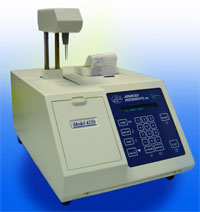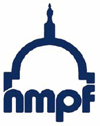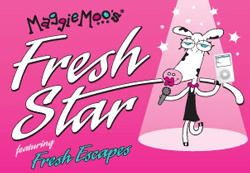 Sounds like a fine idea to me. I sat at an Ohio State Ag Alumni awards banquet last year with an alum from the dairy biz. I was thrilled, being a multi-gallon per week milk drinker, when he ordered a pitcher of the milk for the whole table. His comment was that he was always amazed when he took his dairy clients to dinner that they rarely ordered milk, so he ordered it for them. Sounds like a good policy to me, like fueling your farm equipment with soy biodiesel or driving a flex-fuel car.
Sounds like a fine idea to me. I sat at an Ohio State Ag Alumni awards banquet last year with an alum from the dairy biz. I was thrilled, being a multi-gallon per week milk drinker, when he ordered a pitcher of the milk for the whole table. His comment was that he was always amazed when he took his dairy clients to dinner that they rarely ordered milk, so he ordered it for them. Sounds like a good policy to me, like fueling your farm equipment with soy biodiesel or driving a flex-fuel car.
The US Food and Drug Administration wants to help you in this situation – a new report issued late last week suggests that restaurants should offer more lower-calorie food and beverage choices on menus, including low-fat and fat-free milk and dairy products. The report specifically calls for more low-fat and fat-free milk offerings with an eye toward the multiple nutrients advantages they hold. The report highlights successes at the quick-service restaurant counter, noting that the key to successful milk sales is appealing packaging like resealable plastic bottles.
Here’s another thought, however. The packaging is fine, but have you noticed that US restaurants appear to be trying to make their entire profit margin on milk? Why on earth are the single-serve cardboard cartons we paid 25-cents for in school being sold for 75-cents to a full dollar in restaurants? OR, if you are at a family-style or fine-dining establishment, why do you expect to pay $1.50 and up for a single glass of milk when you can buy the whole gallon in the grocery for $2? Perhaps if we can help restaurants end the dairy price-gouging on their menus we can all enjoy increased dairy demand from the food-service industry. Just a thought.

 If you think processing dairy products is as simple as pumping milk into a container then think again. Today’s processing facilities are miracles of technology. One of the companies that’s supplying their need is
If you think processing dairy products is as simple as pumping milk into a container then think again. Today’s processing facilities are miracles of technology. One of the companies that’s supplying their need is  Just in case you didn’t know this, the National Milk Producers Federation has a website with quarterly reports (Import Watch) that accomplish the following:
Just in case you didn’t know this, the National Milk Producers Federation has a website with quarterly reports (Import Watch) that accomplish the following: Here’s last week’s announcements from
Here’s last week’s announcements from  Last week, the
Last week, the  The
The  The latest addition to the
The latest addition to the  Anything that has an iPod involved catches my eye.
Anything that has an iPod involved catches my eye.  Dairy Markets Week in Review
Dairy Markets Week in Review That same mineral you may be using in your ration may be keeping the bugs in the field from getting sick. The
That same mineral you may be using in your ration may be keeping the bugs in the field from getting sick. The